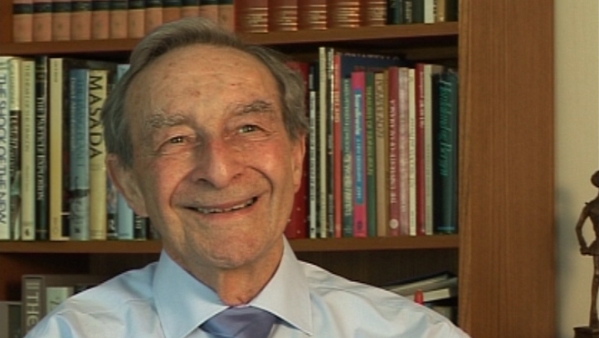NEXT STORY

The Doppler effect in Mössbauer spectroscopy
RELATED STORIES

NEXT STORY

The Doppler effect in Mössbauer spectroscopy
RELATED STORIES



In short, what it is, and it was I think the year that Mössbauer actually got the… Mössbauer... sorry, got the Nobel Prize for the Mössbauer effect. It is, essentially, that if you have a particular type of radioactive transition, gamma ray emission it’s called, and the atom that is giving off the gamma ray is embedded in a solid, you get no recoil. You know that if you fire a gun, the gun recoils. And there are ways of minimising that, but the recoil is there. When an atom gives off a gamma ray, that is energy, and the atom recoils. And that is taken from the energy of the ray.
Now, what Mössbauer found, and this was totally unexpected, was that if the atom was in a solid, the whole of the crystal recoiled, and as the recoil energy is inversely proportional to the mass, it was negligible, because it was the whole crystal, not just the atom, which took the recoil energy. So he had the perception to realise that he was seeing the recoil-less emission of gamma rays, and their resonant reabsorption in another atom. So you have an emitter of gamma rays, and you have an atom in a sample... solid state sample of interest. The gamma rays pass through, and if the atoms in the absorber have exactly the right energy for the gamma ray, the energy will be absorbed. The trick is how to count it.
Well, Mössbauer did it in a particular way, because it was the first time it was done, but in the course of a year or two, some electronic ways were developed, which I needn’t go into, but essentially they used the Doppler effect.
Norman Greenwood (1925-2012) was born in Australia and graduated from Melbourne University before going to Cambridge. His wide-ranging research in inorganic and structural chemistry made major advances in the chemistry of boron hydrides and other main-group element compounds. He also pioneered the application of Mössbauer spectroscopy to problems in chemistry. He was a prolific writer and inspirational lecturer on chemical and educational themes, and held numerous visiting professorships throughout the world.
Title: Explaining Mössbauer spectroscopy
Listeners: Brian Johnson
Professor Brian FG Johnson FRS, FRSE, FRS Chem, FAcad Eu, FAS. Professor of Inorganic Chemistry University of Edinburgh 1991-1995, Professor of Inorganic Chemistry University of Cambridge 1995-2005, Master Fitzwilliam College Cambridge 1999-2005. Research interests include studies of transition metal carbonyls, organometallic chemistry, nano- particles and homogeneous catalysis. Professor Johnson is the author of over 1000 research articles and papers.
Tags: Mössbauer spectroscopy, Nobel Prize in Physics, Rudolf Mössbauer
Duration: 2 minutes, 22 seconds
Date story recorded: May 2011
Date story went live: 25 November 2011